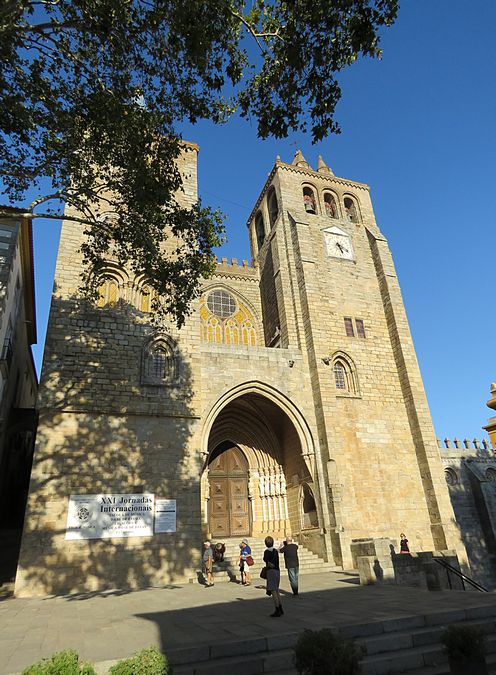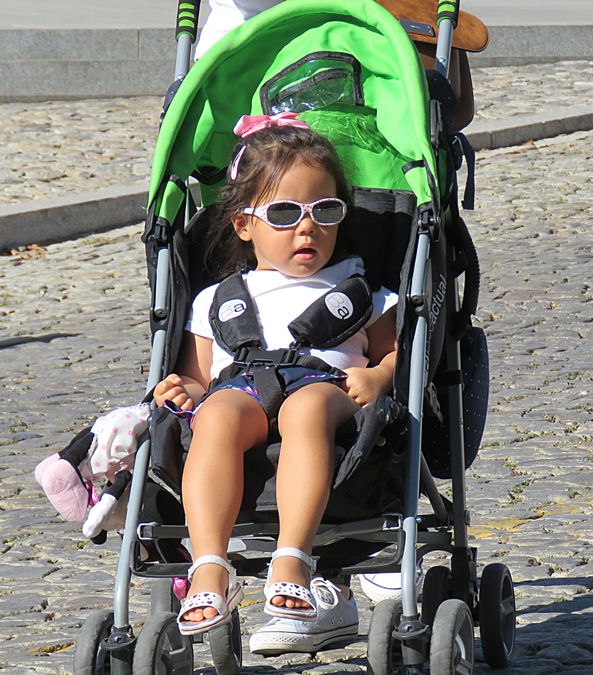Backroads of Iberia: Spanish Paradores & Portuguese Pousadas
September 30 - October 16, 2018
Part One: Portugal, Page Three - Evora

Pousada Dos Loios in Evora, Portugal. We largely stayed in
Portuguese Pousadas and Spanish Paradores, which are
historic
restored inns that used to be castles, convents,
manor homes, or monasteries. This one was a
converted convent from the 15th century.

Evora is an ancient hilltop town with Roman and Moorish roots.
The old town exists within medieval walls. This is the Cathedral
of Evora. Évora was reconquered from Arab hands in 1166
and soon afterwards the new Christian rulers of the city began
to build a cathedral, dedicated to the Virgin Mary. The cathedral
received several additions through time, such as the
Gothic cloisters (14th century), the Manueline chapel of the
Esporao (early 16th century) and a new, magnificent main
chapel in baroque style (first half of the 18th century). It is the
largest of the medieval cathedrals in Portugal, and one of its best
examples of Gothic architecture.

Street lined with souvenir shops near our Pousada. The street
leads to the main square.

The ruins of the Roman Temple of Evora, also referred to as
the Temple of
Diana (although wrongly, after Diana,
the ancient Roman goddess
of the moon, the hunt, and chastity).
The temple is believed to have been constructed around the
first century A.D., in honor of Augustus, who was venerated
as a god during and after his rule. The temple was built in the
main public square of Évora.

The group had a home hosted dinner at the home of a family
in Evora who owned a clothing shop in the town. The 2
daughters of the family are at the head of the table.

Two students from the University in Evora spoke to the group
about higher education. In Portugal, the university system
has a strong theoretical basis and is highly research-oriented,
while the polytechnical system provides a more practical training
and is profession-oriented. Degrees in fields such as medicine,
law, pharmaceutical sciences, natural sciences, economics,
psychology or veterinary medicine are taught only in university
institutions. Other fields like engineering, technology,
management, education, agriculture, sports, or humanities
are taught both in university and polytechnic institutions.
Degrees such as, nursing, health care technician, accounting
technician, preschool and primary school teaching, are only
offered by the polytechnic institutions.

Courtyard at the university

Another view of the Cathedral of Evora

Narrow street in Evora

Saint Francis Church (Igreja de Sao Francisco). Built between
the end of the 15th and the early 16th centuries in mixed
Gothic-Manueline styles. Contains many chapels decorated in
Baroque style, including the Chapel of Bones (Capela dos Ossos),
totally covered with human bones.

The Capela dos Ossos (Chapel of Bones) is one of the
best known monuments in Evora. It is a small interior chapel
located next to the entrance of the Church of St. Francis.
The Chapel gets its name because the interior walls are covered
with human skulls and bones. The Chapel of Bones was built in
the 16th century by a Franciscan monk who
wanted to prod his fellow brothers into contemplation
and send the message of life being transitory.
This is clearly shown in the famous warning at the entrance
Nós ossos que aqui estamos pelos vossos esperamos ("We
bones that here are, for yours await").

The main square in old town Evora

View from the top of Cathedral of Evora
of the surrounding area

Another view from the Cathedral

Lateral wall and transept of Evora Cathedral

In the middle of the central nave there is a large Baroque
altar with a Gothic statue of a pregnant Virgin Mary.

Inside the Cathedral

Two sisters playing in the main square of Evora
A lot of exercise bikes were set up in an area of
the main square, apparently for anyone's use.

A child watching the 2 kids play

Prata Aqueduct, designed by military architect Francisco de
Arruda (who previously designed the Belem Tower). It was built
during the reign of King Joao III between 1531 and 1537
to supply water from the interior to Evora.

Portuguese Cooking School in Evora. Each of us received a
certificate from the main chef. My certificate reads: "I certify
with honor the great commitment and enthusiasm of Patricia
Jameson on the Cooking Class at the Portuguese Cooking
School. I'm sure she will make great gastronomic poems with
the flavors of Portugal." Please contain your laughter.

The Roman Temple at night.
It was right next to our Pousada (lodging).
Link to Part Two, Page One - Spain: Merida, Corona, Seville
Pat's Home Page